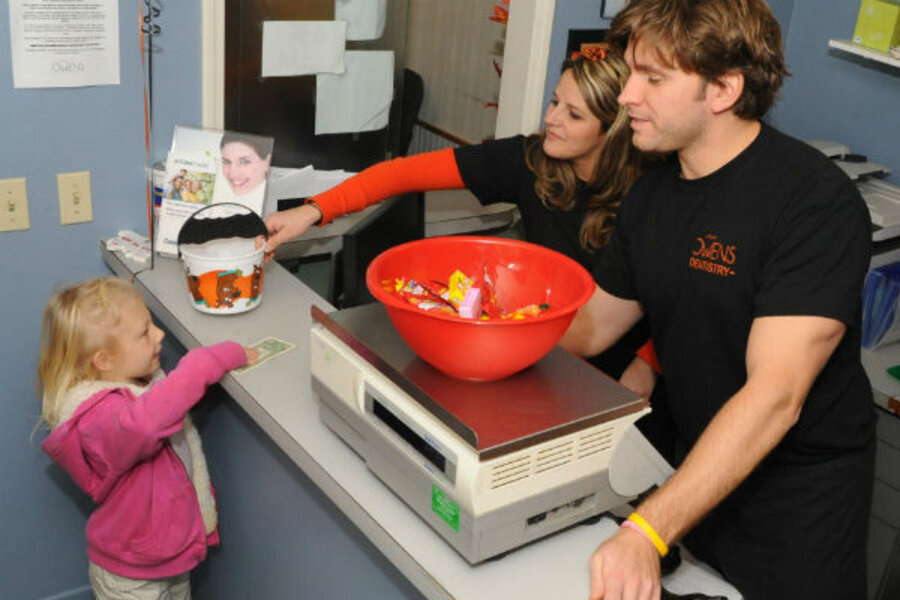Thanksgiving: Teaching gratitude is always in season
Loading...
| BERKELEY, Calif.
It's a little ironic that the season in which we give thanks and the one in which our children are making their holiday wish lists come so close together.
We try to give our children so much but sometimes forget to give them the greatest gift, the capacity to appreciate and to feel grateful. Without that, we can never give them enough. We may want to give them many things, but how do we do this and not give them a sense of entitlement?
This, like most aspects of parenting, is a fine balance.
Many of our own parents tried to make us feel grateful by pointing out the starving children in some far-off land. This strategy often resulted in us offering to send those children the horrible casserole or ugly tennis shoes. In spite of those responses, many of us grew up with far less than our children have but with a greater sense of enjoyment and appreciation.
Just a glance at the sea of media in which our children swim gives us a big hint as to how this happened. All around are material things that they (and we) are led to believe we must have – that we have a right to have. But there are little ways to swim against this tide.
The most important is simply being an example of appreciation for the things in our own lives. It can rub off. The source of gratitude can be anything – the sight of glowing cumulus clouds, our warm home, or a nice meal. They may respond with eye rolling and an, "Oh, Mom/Oh, Dad" (as if we're so sappy). But someday when we say, "Come here a minute, look at that sunset," a big cool teenager might look and say, "Oh, yeah, and I like the way the sun streams from under the edges of the clouds." When that happened to me, I was grateful that I had put up with all the eye rolling.
In my work as a school psychologist, a mother with a rather crabby 9-year-old came to see me for help. We worked out a way to instill a bit more gratitude – but not with reminders of how fortunate he was as a response to his complaints. Instead, we focused on bedtime.
She started by spending a few minutes talking about what had gone on in her day that she was grateful for: a friend who complimented her work, the polite clerk at the store, or the quiet evening with not too much laundry. Then she asked him if anything good happened in his day. He got the idea, shared a few things, and it soon became a ritual.
Like the Bing Crosby song: "When I'm worried and I can't sleep, I count my blessings instead of sheep, and I fall asleep counting my blessings."
What she most appreciated is that this outlook started seeping into his day.
I recently worked with a second-grade class at the teacher's request. She was concerned that she seemed to have a lot of complainers in the group and so we started gratitude training with them.
One day, I began a lesson by reviewing and asked what they remembered from our previous discussions. One little boy said, "Well, gratitude is like a skill that you practice and get better at." I'd never really taught those words, but he had put our lessons together into that sublime understanding, one that takes some of us many years to reach.
Part of what I do in working with youngsters is to help them be aware of what is good in their lives. With the right perspective, there's so much to appreciate. Without it, there will never be enough. And only the things they don't have will seem important.
RELATED: Are you a 'Helicopter Parent?' take our QUIZ!
So along with all the "stuff" on the wish lists this year, we can add our own item: appreciation. It might even help to start by letting our kids know that, regardless of their appearance, their SAT scores, or their athletic ability, they are a source of gratitude in our lives.
The Christian Science Monitor has assembled a diverse group of the best family and parenting bloggers out there. Our contributing and guest bloggers are not employed or directed by the Monitor, and the views expressed are the bloggers' own, as is responsibility for the content of their blogs. Susan DeMersseman blogs at Raising kids, gardens and awareness.








